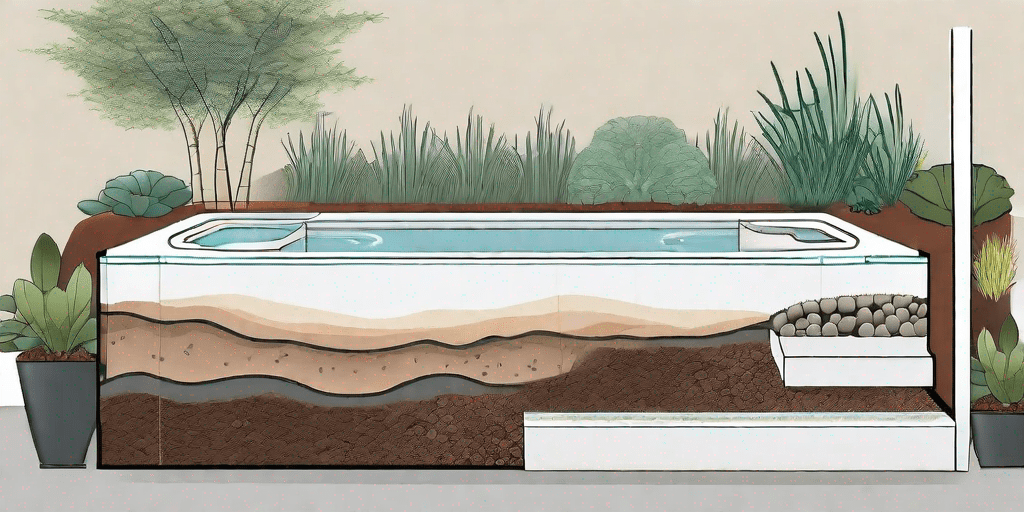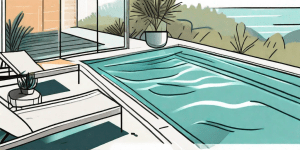Inground spas are a luxurious addition to any Australian backyard. They provide relaxation, therapy, and a place to unwind after a long day. Installing an inground spa may seem like a daunting task, but with some basic understanding and careful planning, it can be a straightforward and rewarding project. In this ultimate guide, we will walk you through the entire process of installing an inground spa, from understanding the basics to the step-by-step installation process.
Understanding the Basics of Inground Spas
Before diving into the installation process, it is essential to have a clear understanding of what an inground spa is and the benefits it offers.
An inground spa, also known as a built-in or permanent spa, is a spa that is installed directly into the ground. Unlike portable spas or hot tubs, which are self-contained and can be moved, inground spas become a permanent fixture of your backyard.
When it comes to inground spas, the possibilities are endless. You can choose from a variety of shapes, sizes, and designs to create a spa that perfectly suits your needs and complements your outdoor space. Whether you prefer a sleek and modern look or a more natural and rustic feel, there is an inground spa design that will meet your aesthetic preferences.
One of the key benefits of installing an inground spa in your Australian backyard is the value it adds to your property. Not only does it enhance the aesthetics of your outdoor space, but it also creates a relaxing oasis that can be enjoyed year-round. Imagine coming home after a long day and unwinding in the warm, bubbling water of your own private spa. It’s a luxury that can greatly enhance your quality of life.
In addition to the aesthetic and relaxation benefits, inground spas also offer a range of therapeutic advantages. The warm water and powerful jets provide relief from muscle tension, joint pain, and stress. The hydrotherapy provided by the spa can help alleviate aches and pains, improve blood circulation, and promote better sleep. It’s like having your own personal masseuse available whenever you need it.
Furthermore, inground spas can be customized with various features and accessories to enhance your spa experience. From LED lighting and waterfall features to built-in sound systems and aromatherapy options, you can create a spa that caters to your specific preferences and indulges all your senses.
When it comes to maintenance, inground spas are designed to be easy to care for. With the right filtration and sanitization systems in place, you can keep your spa water clean and clear with minimal effort. Regular maintenance and cleaning will ensure that your spa remains in optimal condition and ready for you to enjoy whenever you desire.
Overall, installing an inground spa in your Australian backyard is a decision that offers numerous benefits. From adding value to your property and creating a beautiful outdoor space to providing therapeutic relaxation and customizable features, an inground spa is a luxurious addition that can greatly enhance your lifestyle.
Pre-Installation Considerations
Before you start the installation process, there are several factors that need to be taken into consideration:
Installing an inground spa is an exciting project that can bring relaxation and luxury to your outdoor space. However, it requires careful planning and consideration of various factors to ensure a successful installation. In this section, we will explore some important pre-installation considerations that will help you make informed decisions and set the stage for a smooth installation process.
Choosing the Right Location
The first step is to choose the right location for your inground spa. This decision will significantly impact your overall spa experience, so it’s crucial to carefully evaluate your options. Consider factors such as privacy, accessibility, and the amount of sunlight the area receives.
Privacy is an essential aspect to consider when selecting the location for your inground spa. You want to create a serene and intimate atmosphere, away from prying eyes. Take into account the surrounding landscape, neighboring properties, and any potential obstructions that may compromise your privacy.
Accessibility is another important consideration. You want to ensure that your spa is easily accessible from your home and other outdoor areas. Think about how you will navigate to and from the spa, especially during colder months when you may be less inclined to spend time outdoors.
The amount of sunlight the area receives is also a crucial factor to consider. If you enjoy basking in the sun while soaking in your spa, choose a location that gets ample sunlight throughout the day. On the other hand, if you prefer a more shaded and cool environment, select a spot that offers natural shade or consider incorporating shade structures into your spa design.
It’s also important to ensure that the ground is level and capable of supporting the weight of the spa. Uneven ground can lead to structural issues and affect the overall stability and performance of your spa. If the ground is not level, you may need to consider excavation and leveling before proceeding with the installation.
Understanding Local Regulations and Permits
Check with your local council or council regulations to understand any requirements or permits needed for installing an inground spa. Each locality may have specific guidelines and regulations that need to be followed to ensure compliance with safety standards and building codes.
Some councils may have specific guidelines regarding safety barriers, fence height, or electrical connections. It’s essential to familiarize yourself with these regulations to avoid any legal issues or complications during the installation process. Consulting with a professional or seeking guidance from your local council can help you navigate through the permit application process and ensure that your spa installation meets all the necessary requirements.
Budgeting for Your Inground Spa
Installing an inground spa involves various costs that need to be factored into your budget. It’s crucial to set a realistic budget and consider all these factors when planning your project.
The cost of the spa itself is one of the primary expenses. The price can vary depending on the size, features, and brand of the spa you choose. It’s essential to research different options and find a spa that fits your needs and budget.
In addition to the spa, you need to consider other costs such as excavation, plumbing, and electrical work. Excavation costs can vary depending on the complexity of the project and the condition of the ground. Plumbing and electrical work will require professional expertise to ensure proper installation and compliance with safety standards.
Permits and fees associated with obtaining the necessary approvals from your local council should also be included in your budget. These costs can vary depending on your location and the specific requirements set by your council.
Lastly, don’t forget to consider the cost of landscaping and additional features such as lighting or decking. These elements can enhance the aesthetics and functionality of your inground spa but may come at an additional expense.
By carefully considering these pre-installation factors, you can ensure a successful and enjoyable inground spa installation. Taking the time to plan and make informed decisions will help you create a spa oasis that meets your needs and enhances your outdoor living space.
Types of Inground Spas
There are several types of inground spas available, each with its own unique features and considerations.
Concrete Spas
Concrete spas are the most customizable option. They can be molded into any shape or size, allowing you to create a spa that perfectly fits your backyard. Concrete spas require more maintenance and may have a longer construction time compared to other types.
Fiberglass Spas
Fiberglass spas are pre-manufactured and come in a variety of shapes and sizes. They are easy to install and require less maintenance compared to concrete spas. However, they offer less flexibility in terms of customization.
Vinyl-Lined Spas
Vinyl-lined spas are built with a steel or polymer frame and a vinyl liner. They are cost-effective and durable, but they may not offer the same level of customization as concrete spas.
Step-by-Step Installation Process
Now that you have a solid understanding of the basics and have chosen the type of inground spa that suits your needs, it’s time to dive into the step-by-step installation process.
Excavation and Site Preparation
The first step is to excavate the area where the inground spa will be installed. This involves removing the soil and creating a hole that fits the dimensions of the spa. Proper site preparation is crucial for stability and longevity.
Installing the Spa Shell
Once the excavation is complete, the next step is to install the spa shell. This is done by carefully lowering the shell into the excavated area and ensuring it is level. The shell should be supported and connected to the surrounding patio or deck.
Plumbing and Electrical Work
The plumbing and electrical work is a critical part of the installation process. It involves connecting the spa to the water supply, installing the necessary pipes, and ensuring proper electrical connections. Hiring a licensed professional is recommended to ensure safety and compliance with regulations.
Finishing Touches and Landscaping
Once the spa is installed and all the necessary connections are made, it’s time for the finishing touches. This may include landscaping around the spa, adding lighting, or installing decking. These final touches enhance the overall look and functionality of your inground spa.
Installing an inground spa can transform your Australian backyard into a luxurious oasis. By understanding the basics, considering important factors, and following a step-by-step installation process, you can enjoy the benefits of relaxation and therapy right at home.




